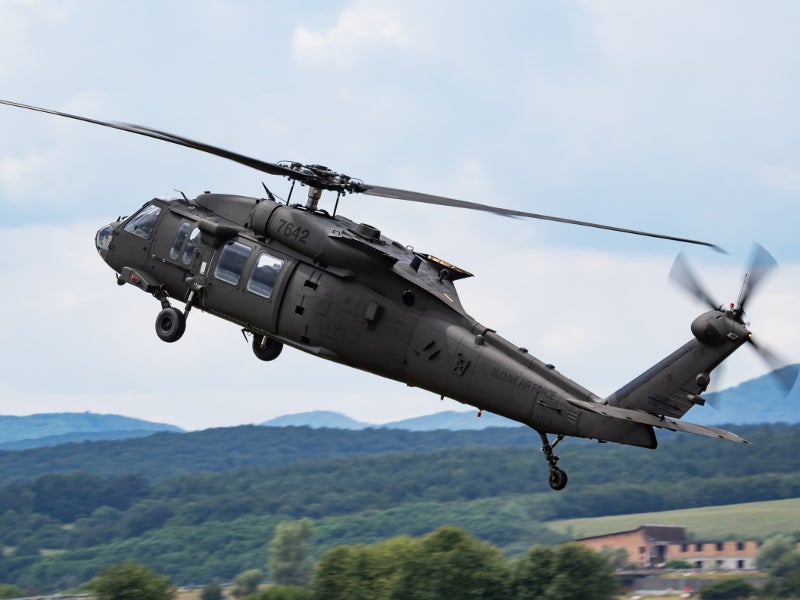Flying High: UH 60 Helicopter Security Protocols You Have To Know
Flying High: UH 60 Helicopter Security Protocols You Have To Know
Blog Article
Navigating Uh 60 Helicopter Regulations and Compliance Requirements

Regulatory Structure Introduction
The regulative framework regulating UH-60 helicopter operations encompasses a complex collection of regulations and criteria developed by air travel authorities. These policies are developed to guarantee the efficient and secure procedure of UH-60 helicopters in numerous atmospheres. The Federal Aviation Management (FAA) plays a main duty in developing and imposing these regulations, which cover a wide range of functional facets, consisting of airworthiness requirements, pilot qualifications, maintenance requirements, and functional treatments.
Compliance with these regulations is essential for helicopter drivers to preserve the highest levels of safety and functional honesty. Failing to abide by these regulations can cause major effects, including crashes, injuries, and governing sanctions. Helicopter drivers must stay informed regarding the latest regulatory developments and guarantee that their operations are in complete compliance with all suitable policies and criteria.
Airworthiness Evaluations and regulations
In the middle of the regulative structure regulating UH-60 helicopter procedures, a critical focus pushes compliance with Airworthiness Directives and conducting extensive assessments to maintain security requirements and functional dependability. Airworthiness Regulations (ADs) are provided by aviation authorities to deal with hazardous conditions in aircraft, including the UH-60 helicopter, and required details activities to be taken by proprietors or drivers. Conformity with ADs is obligatory, and failure to follow these instructions can cause severe repercussions, including grounding of the airplane.
Normal assessments are extremely important to making sure the airworthiness of UH-60 helicopters. These assessments encompass a series of checks, from regular everyday inspections performed by pilots prior to and after flights to extra detailed arranged maintenance assessments executed by certified technicians. Furthermore, special assessments may be required based upon particular problems or incidents. By sticking to a stringent inspection routine, operators can detect and resolve prospective issues immediately, thus boosting the security and integrity of UH-60 helicopter operations.
Pilot Credentials and Training

Pilot training for UH-60 helicopters is comprehensive and covers a vast array of subjects, including airplane systems, emergency treatments, navigation, and mission-specific training. In addition, pilots go through simulator training read review to exercise various emergency situation scenarios in a regulated environment. This training aids pilots establish the essential skills to take care of difficult scenarios successfully.


Furthermore, ongoing training and professional development are essential for UH-60 pilots to remain existing with the most up to date laws, modern technology, and ideal methods. By buying pilot certifications and training, operators can boost safety and security, maximize performance, and ensure conformity with regulative demands in the procedure of UH-60 helicopters.
Functional Limitations and Needs
Pilot credentials and training act as the structure for recognizing the functional constraints and demands related to UH-60 helicopter procedures (uh 60). These functional restrictions are implemented to ensure the safety and security of the team, passengers, and the airplane itself. Operational constraints may consist of elements such as weather, weight restrictions, elevation constraints, and functional boundaries. It is crucial for pilots to be skilled in these limitations to make educated decisions throughout flight operations. In addition, compliance needs, such as adhering to details flight courses, communication procedures, and emergency treatments, are essential for preserving functional safety and security and governing compliance. Pilots need to stay present with all functional limitations and demands via regular training, rundowns, and assesses to reduce dangers and ensure risk-free and reliable UH-60 helicopter procedures. By prioritizing adherence to these functional guidelines, pilots can boost the total security and performance of their missions while promoting regulatory requirements.
Emergency Procedures and Compliance Testing
Efficient emergency treatments and complete compliance screening are important components of keeping operational safety and security and regulative adherence in UH-60 helicopter procedures. Normal compliance screening guarantees that the helicopter meets all regulative requirements set forth by aeronautics authorities.
Additionally, compliance testing might entail simulations of emergency situation circumstances to evaluate the staff's feedback and the helicopter's performance under tension. By focusing on emergency situation procedures and conformity screening, UH-60 drivers can mitigate risks discover this info here and demonstrate Homepage their commitment to safety and regulative compliance.
Final Thought
Finally, adherence to regulative structure, conformity with airworthiness instructions, pilot credentials and training, functional constraints, and emergency situation procedures are vital for browsing the guidelines and needs of running a UH-60 helicopter. uh 60. It is critical for drivers to focus on safety and security and make certain complete compliance with all suitable policies to maintain the airworthiness and operational integrity of the aircraft
Browsing the governing landscape bordering UH-60 helicopter procedures requires a nuanced understanding of the complex web of guidelines and compliance needs.Conformity with these laws is crucial for helicopter drivers to preserve the highest levels of safety and security and functional stability.In the middle of the regulative framework controling UH-60 helicopter procedures, a critical emphasis exists on compliance with Airworthiness Directives and performing detailed examinations to maintain security requirements and operational integrity.Reliable emergency procedures and extensive compliance testing are important elements of maintaining functional security and governing adherence in UH-60 helicopter procedures. Regular conformity testing makes certain that the helicopter satisfies all governing demands established forth by air travel authorities.
Report this page